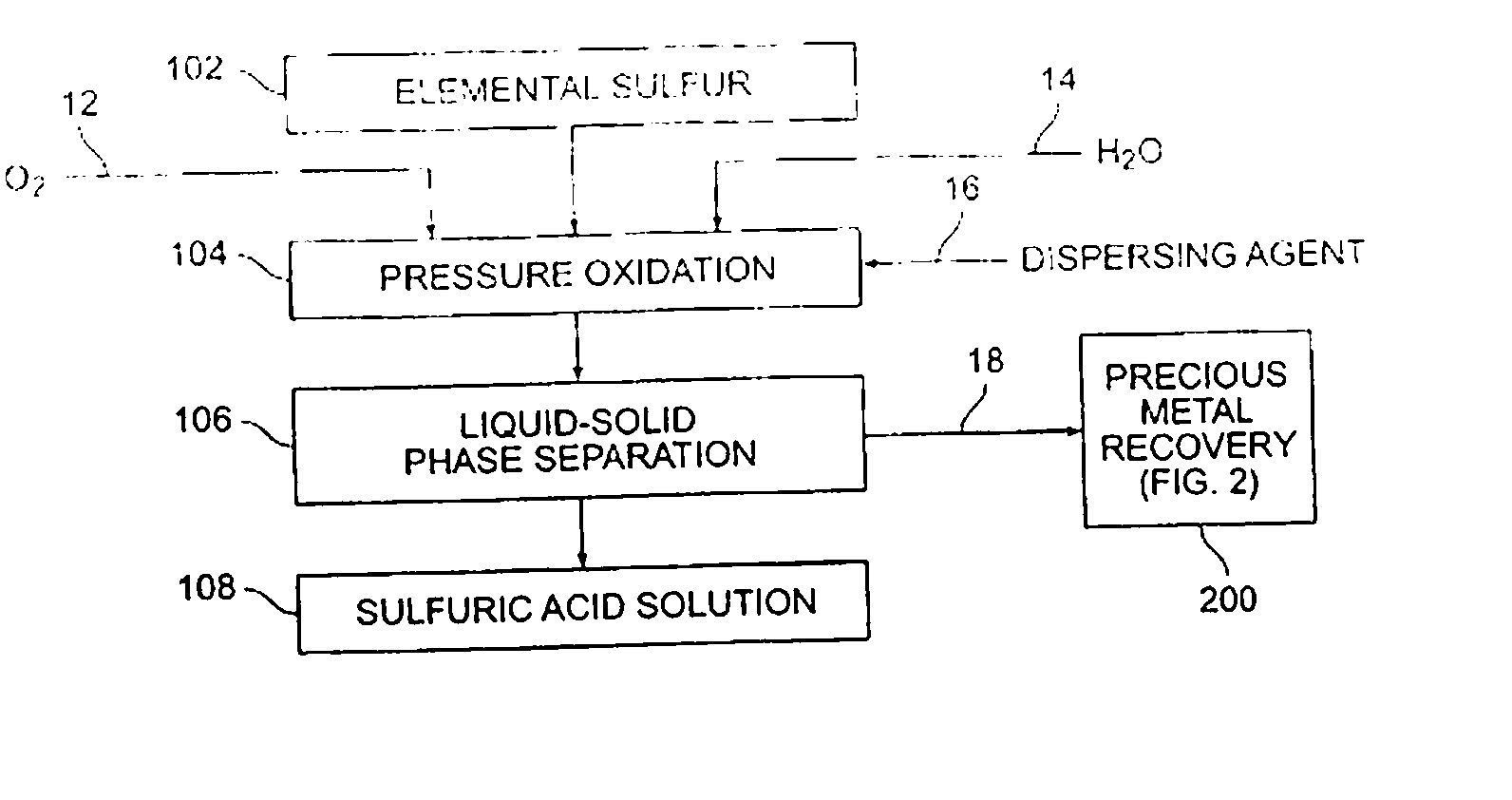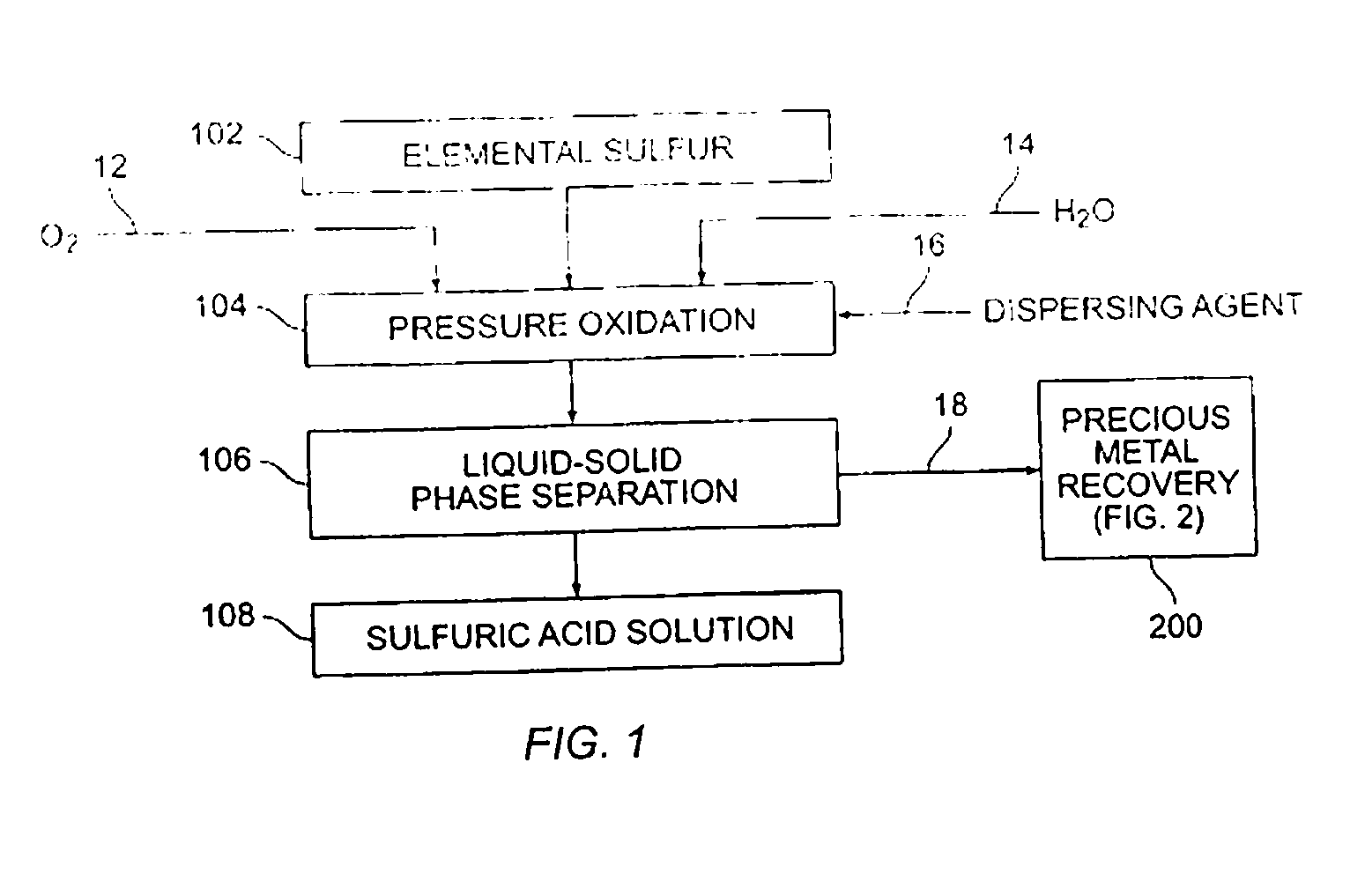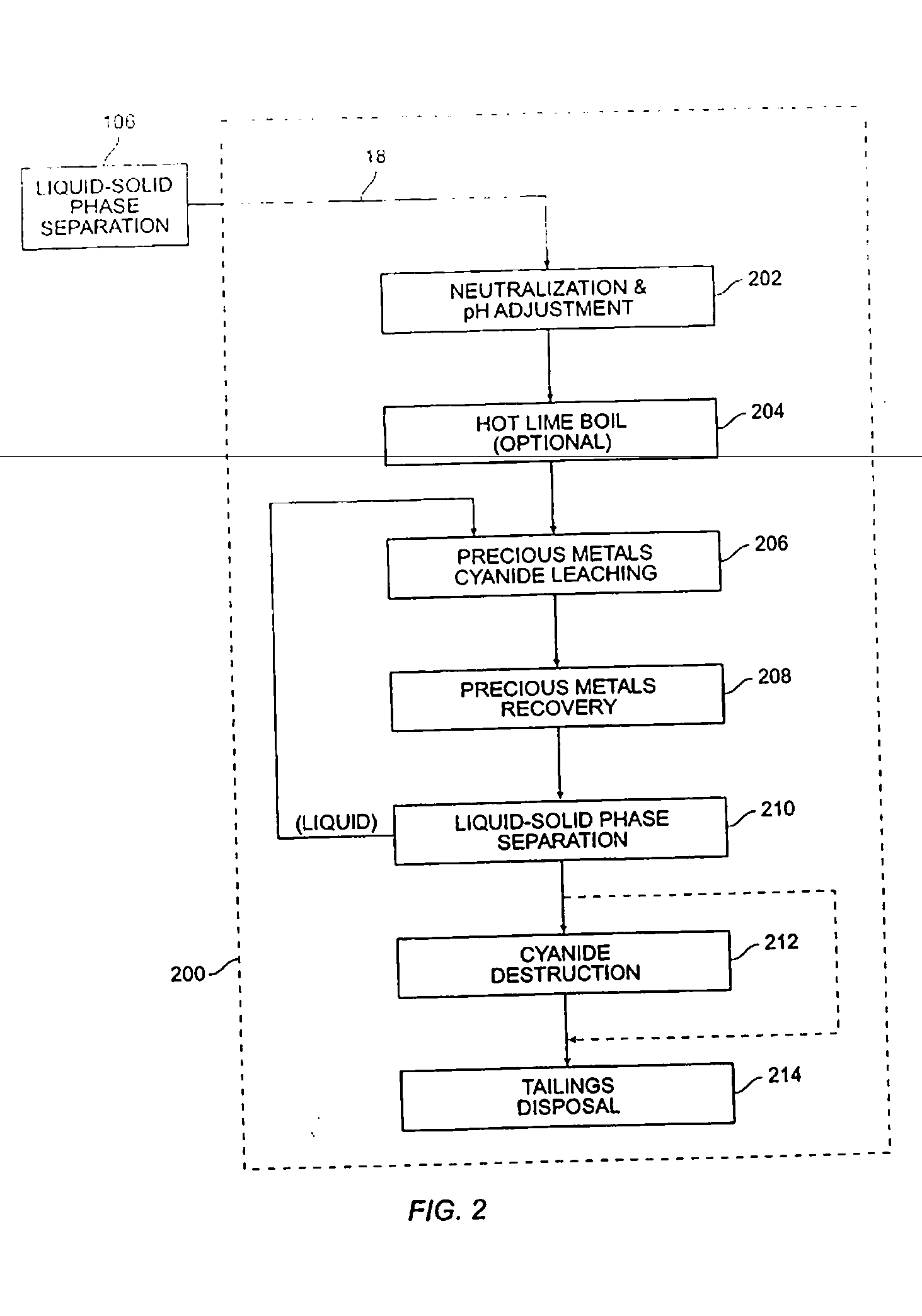Method for Processing Elemental Sulfur-Bearing Materials Using High Temperature Pressure Leaching
a technology of elemental sulfur and leaching, which is applied in the direction of solvent extraction, separation process, dissolving, etc., can solve the problems of affecting the recovery of metal values, and affecting the recovery of elemental sulfur-containing residues, etc., to achieve significant cost savings, facilitate the recovery of sulfuric acid solutions, and enhance the effect of metal value recovery
- Summary
- Abstract
- Description
- Claims
- Application Information
AI Technical Summary
Benefits of technology
Problems solved by technology
Method used
Image
Examples
example 1
[0043] Various sulfur pressure leaching tests were performed. A Parr batch 2.0 liter pressure leaching vessel was utilized. In each instance, elemental sulfur was combined in the pressure leaching vessel with oxygen and water to form a slurry, and the slurry was contained in a non-adhesive liner. The reaction temperature was varied as shown in Table 1. In each instance, the reaction was permitted to operate for one hour. Fifty grams of sulfur with 100 psi oxygen overpressure were provided.
[0044] Yields were obtained by observing the amount of acid produced as compared to the amount of elemental sulfur provided (a theoretical yield of 100% was calculated to represent 3.06 grams H2SO4 / g sulfur).
[0045] As can be seen from the results shown in Table 1, enhanced acid yields were obtainable with enhanced temperature and the utilization of a dispersant, such as ground sand, mineral processing tailings, or other suitable material.
TABLE 1O2 Usageg O2 / g% ofH2SO4Temp.Time%reactedtheoretica...
example 2
[0046] A medium temperature pressure leaching residue containing 23.8 wt % elemental sulfur was prepared for pressure leaching by making a feed slurry having 10.4 wt % solids with synthetic raffinate and water. The feed was provided to a stirred 2.0 liter Parr pressure leaching vessel at 225° C. with 50 psi oxygen overpressure for 60 minutes. The resulting solution contained 55.9 g / L free acid and a bulk residue (containing 2.9% elemental sulfur and 5.1% sulfate). Precious metals were recovered from the residue in acceptable quantities (i.e., 88% gold and 99% silver extraction).
[0047] The graphical profile of FIG. 3 further illustrates the benefits on sulfuric acid yield as a function of temperature and dispersant addition in accordance with various embodiments of the present invention. These results generally indicate that sulfuric acid production increases with increasing temperature. Moreover, the comparison of Curve 32 versus Curve 34 illustrates sulfuric acid yield can be enha...
PUM
| Property | Measurement | Unit |
|---|---|---|
| temperature | aaaaa | aaaaa |
| temperature | aaaaa | aaaaa |
| temperatures | aaaaa | aaaaa |
Abstract
Description
Claims
Application Information
 Login to View More
Login to View More - R&D
- Intellectual Property
- Life Sciences
- Materials
- Tech Scout
- Unparalleled Data Quality
- Higher Quality Content
- 60% Fewer Hallucinations
Browse by: Latest US Patents, China's latest patents, Technical Efficacy Thesaurus, Application Domain, Technology Topic, Popular Technical Reports.
© 2025 PatSnap. All rights reserved.Legal|Privacy policy|Modern Slavery Act Transparency Statement|Sitemap|About US| Contact US: help@patsnap.com



